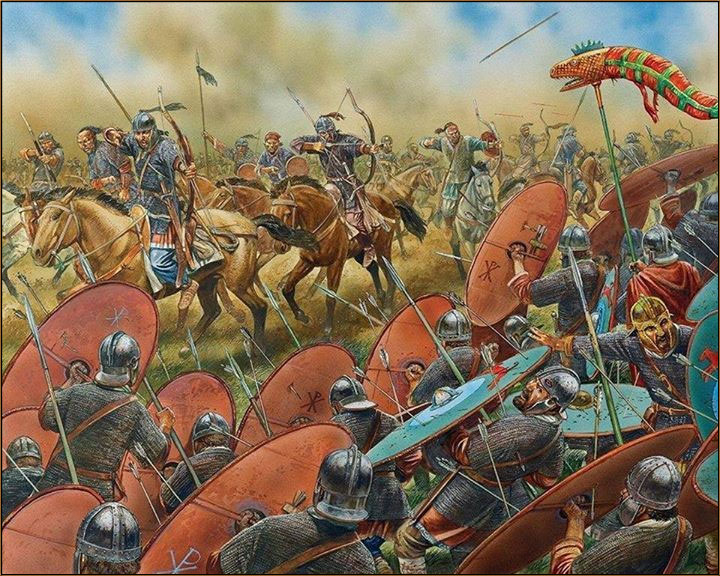Battel of Chalons
On June 20, 451 AD, a coalition led by the Roman general Flavius Aetius and the Visigothic king Theodoric I engaged the Huns and their vassals, who were under the command of their king Attila, in the Battle of the Catalaunian Plains (or Fields), also known as the Battle of the Campus Mauriacus, Battle of Chalons, Battle of Troyes, or the Battle of Maurica Despite the fact that Germanic foederati made up the majority of the coalition army, it ended up being one of the final significant military actions of the Western Roman Empire.
It is debatable if the conflict was tactically decisive, but the Romans may have prevented the Huns from establishing vassals in Roman Gaul. But the Huns were successful in plundering and pillaging a large portion of Gaul and crippling the military strength of the Romans and Visigoths. Only two years later, in 453, Attila passed away. His Hunnic Empire was destroyed by a coalition of Germanic vassals following the Battle of Nedao (454).
Attila's first defeat prevented him from invading all of Europe, and the Germanic peoples used it as a lesson to combat the Huns on their own in the future. The Chalon's triumph, not only on a political level but also in terms of the culture and religion of this continent, can be regarded to have saved European civilization from the calamity of the invasion by the Asian nomadic army. It is one of the wars that changed the history of the world.












